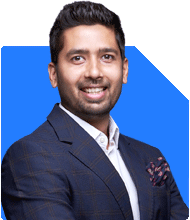Greetings
I am retiring in April 2027. I may get a retirement corpus of around 2Cr. I have FDs of around 60 L Mutual Funds 40L. I have two flats and the home loan of one flat will be repaid before my retirement.
For the other flat there is no loan. Myself and my wife have ancestors property (land)valued at around 6 Cr. I may need a monthly income of 75 K.Kindly suggest investment options for me
Ans: First, congratulations on your upcoming retirement. You've done a great job building a solid financial foundation. You have a diverse portfolio with fixed deposits, mutual funds, real estate, and ancestral property. This diversification provides stability and potential growth.
Your expected retirement corpus of Rs. 2 crore is substantial. With this, along with your current assets and minimal loan commitments, you are well-positioned for a comfortable retirement. Let's evaluate your options to generate a monthly income of Rs. 75,000 while ensuring your capital grows and remains secure.
Creating a Retirement Income Plan
Fixed Deposits (FDs)
You have Rs. 60 lakhs in fixed deposits. FDs offer security and guaranteed returns. However, their interest rates may not keep pace with inflation. It's wise to keep a portion of your retirement corpus in FDs for liquidity and safety. Allocate around 20-25% of your corpus here.
Mutual Funds
You already have Rs. 40 lakhs in mutual funds. Mutual funds are excellent for growth and can be tailored to match your risk tolerance. Consider the following types of funds:
Balanced Funds
Balanced funds provide a mix of equity and debt. They offer growth potential while minimizing risk. Given your age and risk tolerance, a balanced fund can help maintain stability.
Equity Funds
Equity funds are suitable for long-term growth. They can be volatile, but with a horizon of 10-15 years, they can significantly enhance your returns. Diversify across large-cap, mid-cap, and multi-cap funds to spread risk.
Debt Funds
Debt funds are less risky and provide regular income. They are good for short-term needs. Invest in high-quality debt funds to ensure safety and reasonable returns.
Systematic Withdrawal Plan (SWP)
Use an SWP from your mutual fund investments to generate a regular income. It allows you to withdraw a fixed amount monthly, providing you with Rs. 75,000. This method ensures that your capital continues to grow while providing you with the needed income.
Additional Investment Options
Senior Citizens' Saving Scheme (SCSS)
SCSS is a government-backed scheme offering attractive interest rates and regular income. It's safe and suitable for retirees. You can invest up to Rs. 15 lakhs individually or Rs. 30 lakhs jointly. The interest is paid quarterly, providing a steady income.
Post Office Monthly Income Scheme (POMIS)
POMIS is another secure option. It offers a fixed monthly income and is backed by the government. You can invest up to Rs. 4.5 lakhs individually or Rs. 9 lakhs jointly. The interest rate is competitive, and the monthly payout can supplement your income.
Corporate Bonds and Non-Convertible Debentures (NCDs)
Investing in high-rated corporate bonds and NCDs can provide higher returns than traditional FDs. They come with a fixed tenure and interest rate, offering a predictable income stream. Ensure to choose high-rated instruments to minimize risk.
Dividend-Paying Stocks
Investing in blue-chip companies that pay regular dividends can provide a steady income. Dividends are usually paid quarterly and can supplement your monthly income. Choose companies with a strong track record of consistent dividends.
Monthly Income Plans (MIPs)
MIPs offered by mutual funds invest predominantly in debt instruments with a small portion in equity. They aim to provide regular income and capital appreciation. MIPs can be a good option for generating monthly income with moderate risk.
Assessing Risks and Diversification
Risk Assessment
Retirement planning requires balancing risk and returns. While you need growth to beat inflation, capital preservation is equally crucial. Assess your risk tolerance and align your investments accordingly. A mix of safe and growth-oriented investments will ensure stability and growth.
Diversification
Diversification reduces risk and enhances returns. Spread your investments across different asset classes like FDs, mutual funds
, government schemes, and stocks. This strategy ensures that poor performance in one area does not significantly impact your overall portfolio.
Tax Efficiency and Planning
Tax-Saving Instruments
Maximize your tax benefits by investing in tax-saving instruments under Section 80C, such as Equity-Linked Savings Schemes (ELSS) and SCSS. These instruments help reduce your taxable income while offering growth and regular income.
Tax on Returns
Understand the tax implications of your investments. For instance, interest from FDs and SCSS is taxable, while long-term capital gains from equity mutual funds enjoy favorable tax treatment. Plan your withdrawals and investments to minimize tax liabilities.
Health Insurance
Ensure you and your wife have adequate health insurance coverage. Medical expenses can erode your retirement corpus quickly. A comprehensive health insurance plan will provide peace of mind and financial security.
Estate Planning
Wills and Trusts
Estate planning is essential to ensure your assets are distributed according to your wishes. Draft a will to specify how your properties and investments should be allocated. Consider setting up a trust for efficient estate management and to minimize disputes among heirs.
Nomination and Succession
Ensure all your financial instruments have updated nominations. This simplifies the process for your heirs and ensures that your assets are transferred smoothly. Discuss your plans with your family to avoid confusion and misunderstandings later.
Emergency Fund
Liquidity
Maintain an emergency fund equivalent to 6-12 months of your monthly expenses. This fund should be easily accessible and kept in a liquid instrument like a savings account or a liquid mutual fund. It provides a financial cushion for unexpected expenses.
Reviewing and Adjusting Your Plan
Regular Reviews
Regularly review your investment portfolio to ensure it aligns with your goals and risk tolerance. Financial markets and personal circumstances change, so adjust your plan accordingly. Seek advice from a Certified Financial Planner to stay on track.
Rebalancing
Rebalancing your portfolio periodically is crucial to maintain your desired asset allocation. If your equity investments perform well, they might constitute a larger portion of your portfolio, increasing risk. Rebalance by selling a portion of equity and investing in debt to restore balance.
Stay Informed
Keep yourself informed about financial markets and new investment opportunities. Continuous learning helps make informed decisions and adapt to changing market conditions. Subscribing to financial newsletters and attending seminars can enhance your knowledge.
Long-Term Growth Strategies
Equity Investments
For long-term growth, maintain a portion of your portfolio in equity investments. Equities have historically outperformed other asset classes over the long term. However, they come with higher risk, so balance your equity exposure based on your risk tolerance.
Real Assets
While you've asked not to consider real estate, it's worth mentioning that your ancestral property is a significant asset. Ensure it is well-maintained and consider potential income streams from it, such as renting or leasing, to supplement your retirement income.
Genuine Compliments and Appreciation
You have done an admirable job of planning and saving for your retirement. Your diverse portfolio, debt-free lifestyle, and significant assets reflect careful planning and financial discipline. It’s evident that you have a clear vision for a comfortable and secure retirement.
Your meticulous approach towards ensuring a regular income and safeguarding your assets for the future is commendable. You’ve laid a strong foundation for your golden years, and with a few strategic adjustments, you can enjoy a financially worry-free retirement.
Final Insights
Retirement planning is a continuous process that requires regular monitoring and adjustments. Your primary goal should be to ensure a stable and sufficient income while preserving your capital. Diversify your investments, assess risks carefully, and make informed decisions.
Utilize safe investment options like SCSS, POMIS, and high-rated corporate bonds for regular income. Consider mutual funds for growth, and always keep an emergency fund. Regular reviews and rebalancing will keep your portfolio aligned with your goals.
Stay informed, and don’t hesitate to seek advice from a Certified Financial Planner to optimize your strategy. Your proactive approach and diversified portfolio set you up for a successful and enjoyable retirement. Keep up the good work and continue to make prudent financial decisions.
Best Regards,
K. Ramalingam, MBA, CFP,
Chief Financial Planner,
www.holisticinvestment.in



























